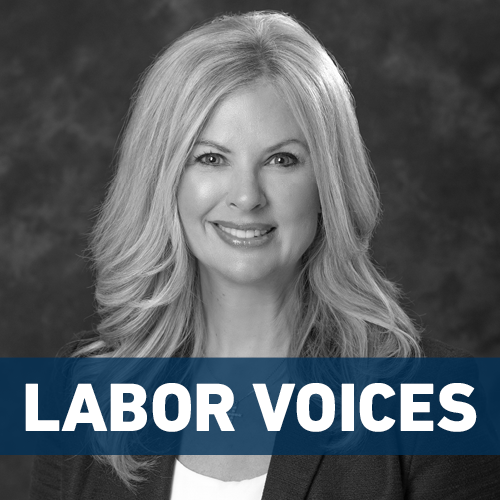SVSU profs: AI can boost creativity

Phillip Hanson had “a bit of an existential crisis” when a new AI image generator emerged 18 months ago. An accomplished painter and digital artist, he realized artificial intelligence could achieve visual effects like his – only much faster.
Having undertaken an art project using the system, called Midjourney, Hanson then made another discovery: leveraging “constrained optimization”—which tightly limits AI offerings in response to a prompt—can spur human creativity rather than stifling or replacing it.
“It’s a delicate balance that streamlines the creative process, allowing for rapid exploration of ideas on the screen—not too many to overwhelm and not too few to limit your vision,” he said.
An art lecturer at Saginaw Valley State University, Hanson and fellow SVSU Associate Professor of Art J. Blake Johnson delivered an ambitious keynote address at MEA’s Higher Education conference last fall to demonstrate AI’s boundless potential alongside its implications and society’s imperatives.
“Fostering an ethical symbiosis between humanity and AI isn’t merely about coding algorithms,” Hanson said. “It’s about instilling a value system that emphasizes the human in the human-machine interface.”
To that end, faculty at SVSU are seeking a National Science Foundation grant to advance AI integration in the university’s computer science and creative disciplines and conduct an empirical study of the impact on student learning outcomes.
“Our initiative is not just about adopting new technologies; it’s about reshaping the educational landscape to better prepare our students for the challenges and opportunities that lie ahead in their professional lives,” Johnson said.
Fears of students misusing technology are understandable, Johnson said. One AI model allows students to upload previous essays they’ve written and train it to write in their voice. But avoidance is impossible: The technology is powerful and advancing.
Instead he and Hanson use AI to develop students’ knowledge, critical thinking and “steering” ability – their skill at interacting with machines to advance their own creativity and problem-solving.
“The thing I want my students to understand is AI won’t take your job; it’s somebody using AI that will take your job,” Johnson said. “It’s best to adapt—let’s stay on top of it.”
AI tools can be programmed to work as tutors on any topic, eliciting a student’s prior knowledge, explaining concepts to a specified grade level, asking questions and critiquing student responses. Educators can make lessons more inclusive or better at targeting a standard.
The uses are endless – already more than 5,000 AI tools exist, Johnson said. AI can guide students in career exploration and walk them through a job interview—then evaluate their performance.
Wearable AI is on the way, Hanson said, offering tips for newcomers: get the best AI you can afford. Then converse with it. If you get stuck, step back. “You can always ask the AI to help you,” he said.
Soon AI will be solving medical mysteries, Johnson told conference goers. “I believe we can adapt and use AI wisely to serve us and help the world. If we maintain our core values, it certainly can be beneficial to you and students at your colleges, universities, and schools.”
RELATED STORIES
Get ready—AI is transformative: ‘We have to focus on the speed of change’
CMU prof: ‘We can do this. We have to.’
Veteran: AI ‘democratizes education’



